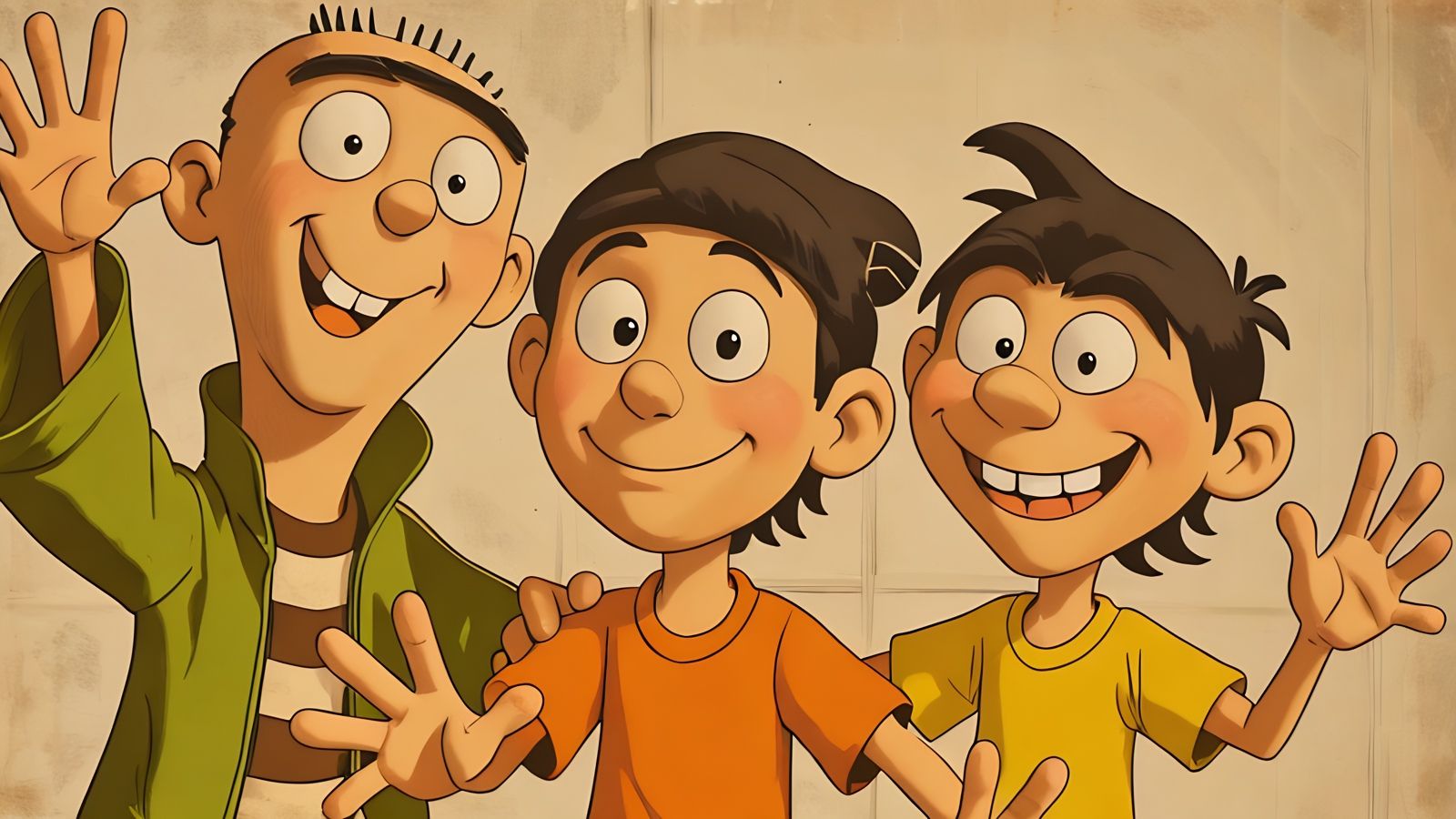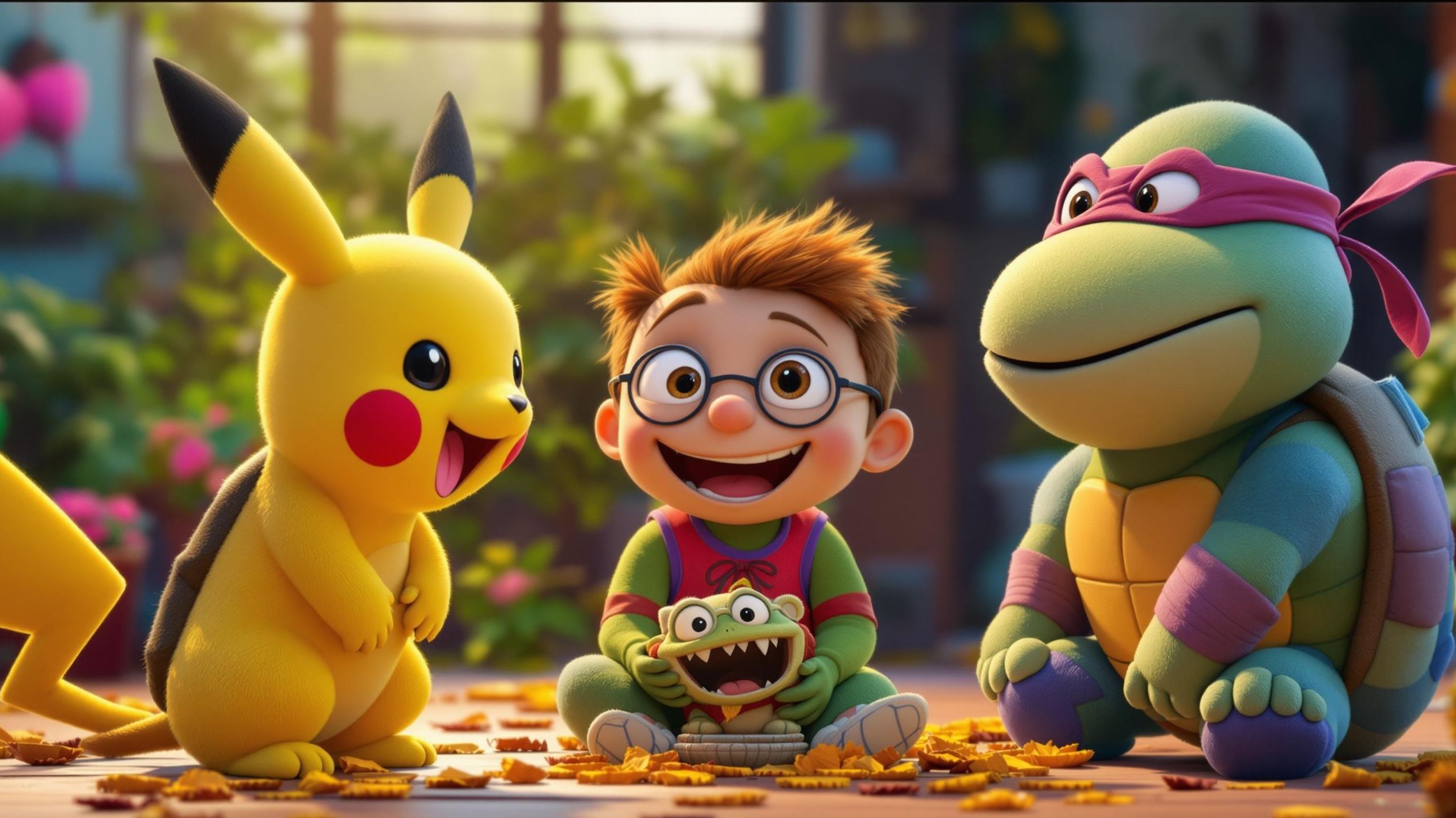The Quiet Power of “As Told By Ginger”
In the loud, colorful chaos of early 2000s animated television—where slapstick, surrealism, and superpowers ruled the airwaves—there was one show that whispered rather than shouted and still managed to hit harder than most. That show was As Told by Ginger. And at the center of it all? Ginger Foutley: red-haired, soft-spoken, introspective—and the most real teen ever put on television.
While other cartoons gave us quirky adventures and gag-a-minute madness, Ginger gave us puberty, poetry, heartbreak, acne, divorced parents, and that awful moment when your best friend starts hanging out with someone cooler. She was the teen girl next door—except this time, she wasn’t a background character. She was the voice, the journal-keeper, and the beating heart of a generation trying to figure themselves out.
Ginger wasn’t flashy. She didn’t wear a cape. But she made every awkward, emotional, beautiful moment feel valid—and in doing so, she became the quiet hero we didn’t know we needed.
She Wrote It Like It Was
What made Ginger so unique was that her voice—literally and figuratively—was hers. Every episode opened with her journaling, pouring out her thoughts in quiet reflection. These weren’t just monologues. They were confessions, questions, and sometimes even rants that captured the raw, unfiltered voice of a girl just trying to understand her world.
Her journal was sacred. It wasn’t a gimmick or narration device—it was the lens through which we saw the world. And it was so real. Ginger wrote about feeling left out. About wanting to be popular but not wanting to lose herself in the process. About watching her mom work two jobs and still trying to be there for her. About liking a boy and not knowing what to do with that feeling.
While most cartoons wrapped up every plot in a bow, Ginger’s stories lingered. Her thoughts often didn’t have answers. And that was the point. Life didn’t hand her clarity—just questions and the courage to keep asking them.
She Wasn’t Perfect—And That Was Perfect
Let’s be honest: a lot of teen characters from the early 2000s were either too perfect or played their flaws for laughs. Ginger didn’t fall into either trap. She made mistakes. Sometimes she let popularity get to her head. Sometimes she left her friends hanging. She got jealous. She got scared. She cared too much and then tried to act like she didn’t care at all.
But the beauty of Ginger Foutley was that she always came back. She apologized. She grew. She tried. Watching her stumble through adolescence felt like watching ourselves on screen—and instead of laughing at her, we learned with her.
It was revolutionary in its honesty. No teen was ever just one thing. And Ginger let herself be everything—hopeful, confused, loyal, selfish, smart, insecure. She was a full, breathing character in a sea of one-dimensional archetypes. And that’s what made her unforgettable.
The World Wasn’t Simple—And Neither Was Hers
Ginger didn’t exist in a bubble. Her world was rich, complex, and emotionally nuanced. There was Carl, her oddball younger brother whose adventures could’ve been a show in their own right. There was Dodie and Macie, her loyal yet complicated best friends, who brought their own anxieties and drama to the table. There was Darren, the boy next door with the world’s most iconic braces transformation arc. And of course, Courtney Gripling—the rich, popular girl who should’ve been a one-note antagonist, but instead became one of the most layered characters in the show.
Their relationships weren’t black and white. Ginger wasn’t always the victim or the hero. Sometimes she was the one who messed up. Sometimes Dodie was wrong. Sometimes Courtney wasn’t being fake—she just didn’t know how to be a good friend. The show didn’t force resolutions. It let things sit. It let viewers feel the complexity.
That honesty extended to Ginger’s family, too. Her mom Lois was a single parent doing her absolute best, and the show never sugarcoated the difficulty of that. Lois was nurturing but tired, wise but overwhelmed. Their relationship wasn’t built on snappy comebacks or “Mom, you’re embarrassing me!” sitcom tropes. It was built on mutual respect and honesty. Ginger trusted Lois enough to be vulnerable, and Lois trusted her daughter to make decisions—even when it scared her.
She Faced Real Stuff—And So Did We
One of the most powerful things As Told by Ginger did was tackle real issues that most “kid” shows wouldn’t touch with a ten-foot pencil. We’re talking about body image, betrayal, mental health, class differences, bullying, even death. Remember the episode where Ginger finds out her friend’s mom died and she has to write a eulogy? That hit harder than any cartoon had the right to—and it wasn’t sensationalized. It was quiet, respectful, and deeply moving.
There was also that unforgettable arc where Ginger gets her appendix removed and spirals into a depression. A children’s cartoon showing a teen girl navigating medical trauma and existential dread? That was bold. And it was handled with so much care and truth that it still holds up today.
These stories weren’t forced to end in laughs or simple morals. Sometimes they just ended, with a quiet realization or a lesson that hadn’t quite settled in yet. The show trusted its audience to handle complicated emotions—and Ginger was the anchor through it all.
That Glorious, Angst-Soaked Aesthetic
Let’s talk about the look. As Told By Ginger didn’t just sound different—it looked different. The animation had this sketchy, watercolor vibe that gave everything a dreamy, melancholic tone. Characters changed outfits (a big deal in animation). Their expressions were subtle. The world felt lived-in, like you could smell the pencil shavings and old library books.
And then there was the music. The theme song, “I’m in Between,” performed by Macy Gray, was the perfect melancholic teen anthem. That voice, those lyrics, that vibe—it was like the whole show exhaled a sigh of bittersweet emotion. And every once in a while, the show would drop an original song in-character—and Ginger’s poems turned into lyrics, her feelings into full-on ballads. It wasn’t just clever. It was art.
Ginger’s world felt like being 13. Like sitting by the window on a rainy day, writing poetry about a crush who doesn’t even know you like them. It was mood before mood boards existed.
She Gave Quiet Kids the Spotlight
For every loud, class-clown cartoon kid out there, there was a quiet, journal-writing kid watching from the back of the room. Ginger Foutley was for them. She was for the kids who didn’t always have the right thing to say, but who felt everything. For the ones who kept notebooks filled with doodles and dreams. For the ones who navigated the storm of adolescence without a spotlight—and suddenly saw someone like them at the center of the story.
She wasn’t invisible. She wasn’t the quirky best friend. She was the lead. And she proved that quiet doesn’t mean weak. That introspection is power. That growing up is messy and weird and hard—but it’s also beautiful.
The Episode That Broke Us: “And She Was Gone”
If you only ever watch one episode of As Told by Ginger, make it “And She Was Gone.” This is the moment that took Ginger Foutley from “well-written teen character” to actual icon. The episode dives into themes of loneliness, identity, and even suicidal ideation—with a surreal, haunting tone that no one expected from a Nickelodeon cartoon.
In this episode, Ginger writes a poem for class that unknowingly echoes the feelings of someone struggling with deep emotional isolation. The line “And she was gone” is taken as a metaphor for someone contemplating escape or even disappearing entirely. The poem gets passed around, and suddenly, everyone thinks Ginger is crying out for help.
And here’s where it gets so real: Ginger didn’t mean it that way—but once confronted with how people reacted, she realized how much she had been feeling lost. That’s what adolescence often is: saying things without realizing what you’re saying until someone reflects it back at you. Ginger didn’t even know she needed help until the poem gave her a mirror.
This wasn’t just a standout episode—it was a milestone in animated storytelling. It addressed mental health with tenderness, artistry, and emotional honesty that was almost unheard of in kid’s media at the time. And for many fans, this was the moment they truly saw themselves in Ginger. She didn’t just feel their feelings. She articulated them.
The fact that this episode exists in a cartoon that aired alongside slime-themed game shows and talking sea sponges still feels radical. But it was so necessary. It told a generation that their sadness was valid. That feeling overwhelmed didn’t mean they were broken. And that someone—even if it was a redhead with a notebook—got it.
Ginger’s Legacy: Why She Still Matters
In the years since As Told by Ginger aired, TV has seen a rise in more nuanced portrayals of teenage girls—think Pen15, Daria, or even Degrassi. But Ginger Foutley laid the groundwork. She showed that girls could be introspective without being melodramatic, emotional without being unstable, smart without being perfect.
Ginger wasn’t a trend. She was a blueprint.
Even now, more than two decades later, fans return to the show and find new layers. Adults rewatching the series often see Lois Foutley in a whole new light—understanding her sacrifices and quiet strength in a way that flew over our heads as kids. Others revisit the complex friendships and realize how much Ginger taught them about communication, boundaries, and forgiveness long before they had the vocabulary for it.
In an age of bingeable content, Ginger’s story still demands to be savored. It’s not about spectacle. It’s about resonance. Real, deeply emotional resonance that makes you reflect on your own teenage years—and sometimes, your current struggles too.
Plus, let’s be real: we’re in a golden age of nostalgia. With reboots popping up left and right, fans have long begged for As Told By Ginger to return. But part of what makes the show so powerful is that it never overstayed its welcome. It let Ginger grow up. She graduated. She moved forward. And that in itself was revolutionary. She wasn’t frozen in time like so many cartoon characters—she evolved. And watching her do so made us feel like we could, too.
She Was You, She Was Me, She Was Us
Ginger Foutley didn’t crash through walls or crack nonstop jokes. She didn’t solve crimes or fly spaceships. What she did was infinitely harder: she felt her way through life, and let us come along for the journey.
She spoke for the kids who were always thinking, who felt too much, who tried too hard to fit in, and who sometimes just wanted to sit quietly and figure themselves out. She was shy. She was scared. She was kind. She was occasionally selfish and often unsure. She was what we all were—or still are—in the strange, shaky space between childhood and adulthood.
Ginger Foutley proved that you don’t need to be loud to be heard. That the smallest voices can carry the biggest truths. That even if you’re still “in between,” you are valid, important, and powerful.
She didn’t change the world. But she changed ours.





